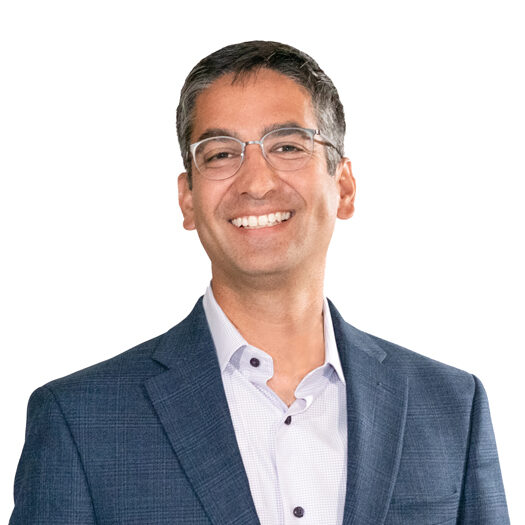
Originally published in Healthcare Dive.
The healthcare industry is experiencing a persistent and growing divergence between the need for skilled healthcare professionals and the workforce available to meet those needs. The escalating need is being driven by:
- An aging population
- An associated increase in the prevalence of chronic diseases and demand for healthcare services, particularly among those age 60 and over—a segment of the population projected to double by 2050
- The increasing pace of technological innovations
At the same time, workforce shortages are resulting from a multifaceted, high-pressure work environment. The consumerization of healthcare services is increasing pressure to deliver higher-quality care at reduced costs. Combined with lingering impacts from the pandemic, this has led to increased levels of stress, burnout, and exhaustion among healthcare professionals. Some analyses highlight that more than a quarter of healthcare workers intend to leave their jobs within two years, and more than half stated that the pandemic had decreased their likelihood of staying in their current profession.
These challenges highlight the necessity for a more intentional and integrated approach to workforce planning and development as organizations and their provider partner networks need sustainable solutions to recruit, develop, and grow a highly skilled workforce.
Workforce Planning and Development in Healthcare Isn’t Easy
Many healthcare organizations have spent vast amounts of time, and developed strong processes, supporting clinical staffing (particularly nurse staffing). These fall short of what we would often see as successful planning and development programs, however, and are much more focused on the staffing process in the short term.
Additionally, healthcare organizations have a much larger population than just nurses or their clinical staff—often more than 50% of a healthcare system’s staff are neither physicians nor nurses but rather other medical and administrative staff.
Finally, many of our healthcare clients develop workforce planning and development programs independently with unclear roles and responsibilities and lacking adequate organizational support. We often observe a disconnect between enterprise and people strategies, employee skills and employer needs, and an inconsistent employee experience.
Steps to Get Workforce Planning and Development to Help
Workforce planning and development programs, together with ongoing support and clear roles, can provide valuable tools to help providers anticipate labor needs and understand the skills and talents required to meet those needs. This can be achieved by:
- Understanding the enterprise strategy and having a strong grasp of the provider’s business strategy, including patient care improvement, market expansion, and medical innovation expectations.
- Forecasting talent needs using predictive analytics to anticipate current and future staffing requirements and addressing potential shortages before they become critical.
- Leveraging technological advancements such as generative AI and telehealth can boost efficiency, improve patient care, and lessen the burden on healthcare workers.
- Analyzing the workforce holistically by encompassing all roles within the organization and focusing on administrative roles as well as nurses, physicians, and other specialists. It is important to assess the size, skills, competencies, as well as any gaps and surpluses in each area.
Workforce development programs with an integrated approach and focus on training, role expansion, and upskilling will help ensure healthcare professionals have the necessary skills, support, and flexibility to successfully fill providers’ staffing needs by:
- Creating leadership development and mentor programs to help employees transition from individual contributors to managerial positions to enhance team collaboration and ensure effective management of resources and staff.
- Developing innovative recruitment and retention strategies to address the organization’s priorities, including building talent pipelines through recruitment campaigns, collaborating with educational institutions, and international nursing recruitment. Some healthcare institutions are addressing the recruitment challenge by establishing their own schools to feed future talent pipelines.
- Focusing on upskilling and reskilling existing employees to meet evolving industry demands. Expanding the scope of practice for healthcare professionals can help alleviate workforce shortages and improve access to care. A growing number of healthcare institutions are turning to nurse practitioners as a solution for physician shortages. This approach enhances the utilization of skilled healthcare professionals and improves overall patient outcomes .
- Encouraging continuous learning and providing opportunities for professional growth can help employees stay current with industry advancements and improve their skills, leading to better patient care and job satisfaction. Healthcare workers can pursue certifications in specialized areas, attend workshops and training programs, or even return to school for advanced degrees.
- Getting to the root of staff turnover, addressing the reality of clinician burnout, and developing policies and initiatives to maintain a consistent, reliable, well-balanced healthcare workforce.
Conclusion
Implementing these workforce planning and development strategies in an integrated manner, with a focus on training, upskilling and role expansion, and technology and telehealth, providers can better navigate the changing healthcare landscape. To start, organizations can focus on the fundamentals:
- Clarify key roles, responsibilities, and processes. This includes how teams are structured and aligned with the organization to ensure effective communication.
- Identify critical jobs. Analyzing open positions, business strategy, operational needs, and historical recruiting and development data can provide insight into how limited resources should be applied.
See more here for thoughts on how to approach this growing challenge in healthcare.
Yana Tyler also co-wrote this article.

